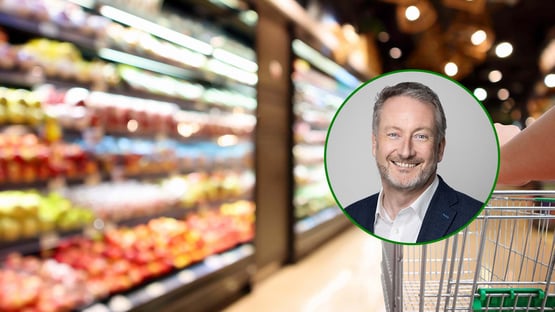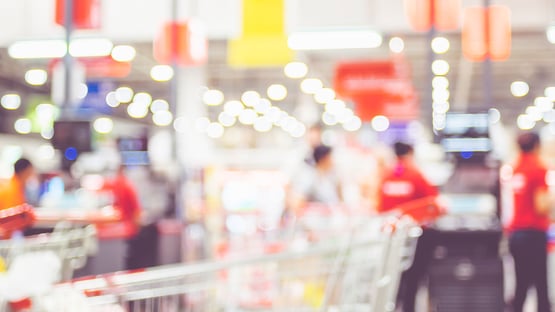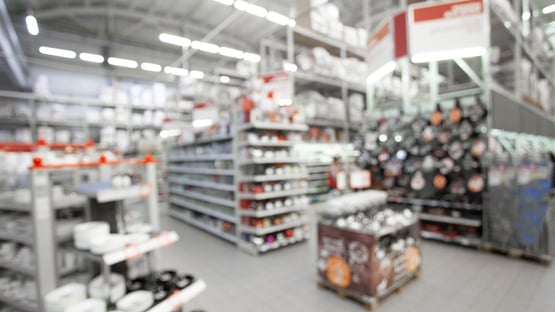What retailers really want from their technology providers is often overshadowed in the media and at events by the futurology or exciting but peripheral innovation. Time to focus on the basics, says Duncan Potter, CMO from Pricer.
Annual analyst predictions tend to miss what retailers really need to succeed for a number of reasons, not least that the future keeps on arriving and is ever more unpredictable. Or the predictions miss the less glamorous but nevertheless important things, like in store execution, for example.
Retailers have always had to be pretty good at probably more things than any other industry, due to the length of the supply chain, the size of a distributed estate, the ever-expanding new channels to market and a demanding and fickle consumer that lives almost on the edge of their feelings when it comes to consumption, be it food or fashion.
As if this wasn’t challenging enough; post pandemic, all these dynamics are running hot and anyone’s ability to cool them is hampered by rising inflation, wage costs, disrupted supply chains and the unpredictable impact of current geopolitics.
Now, we are in a place where retailers have to be excellent at everything. Take one seemingly trivial example that proves this. During Covid, the UK was consuming almost all of its calories from supermarkets, so dynamic pricing and promotions were of much lesser importance in an otherwise cut-throat competitive market.
Now, grocery retailers are refocusing on efficient replenishment, price and promotion and re-engaging in price wars to at least try and tackle the cost of living crisis.
What this means is they are going back to basics, focusing on ruthlessly efficient execution in the store. And the technologies that are needed to enable this, many are already tried and tested so do not carry the risks attached to pure innovation.
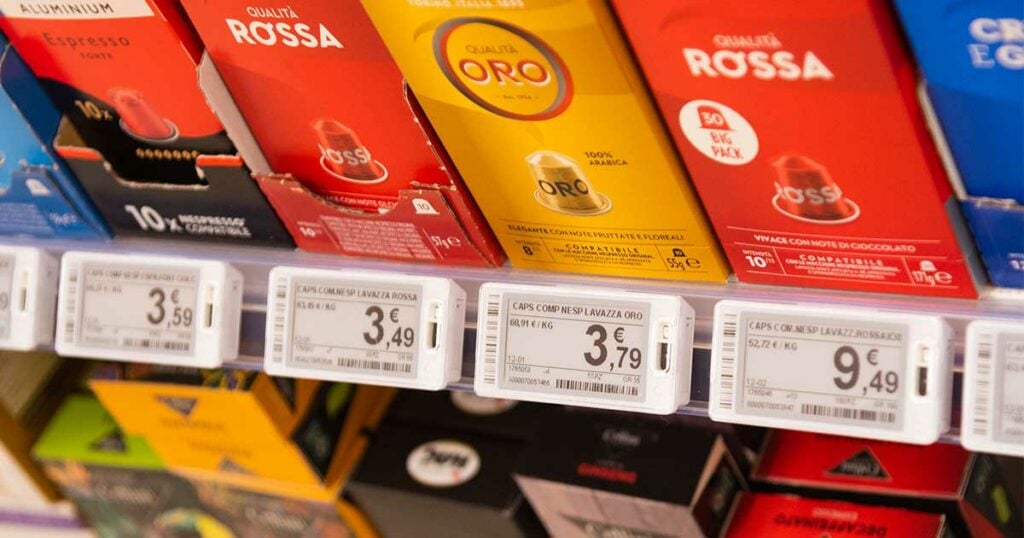
Using technologies such as electronic shelf-edge labels to better communicate at the shelf-edge
Understanding which are the priority technologies comes from insight into consumer preferences. Recent research by Pricer shows that price, value perception and promotional availability were the top motivators when it came to switching at the shelf-edge, so using technologies such as electronic shelf-edge labels to better communicate these elements is critical.
In fact, with information on products being so central to them being selected, the ability to add and change it is important. In the research, 57% of consumers wanted more access to product information in addition to pricing at the shelf edge, while a further 57% also said they would like to see sourcing or ingredients information at the shelf edge.
In addition, 45% said they were put off buying a complex or considered purchase as there hadn’t been enough product information available in the aisle, while 49% wanted more digital signage or information at the shelf edge to help inform their buying decision.
However, in order in order to remain competitive, retailers are having to meet customer preferences by using their labour more effectively.
A simple, compelling equation around pricing still holds true after many years, that instant, universal price changes, with guaranteed accuracy using shelf-edge labels are a significant savings over using labour to check and apply paper labels, without even going into the sustainability gains from cutting paper out.
Based on 500 price changes per week and two minutes to change each price tag (including printing, sorting and finding the right product) at an hourly cost of €20 that comes to more than €17,000 a year saved.
Using electronic labels to help staff with in store picking for online orders
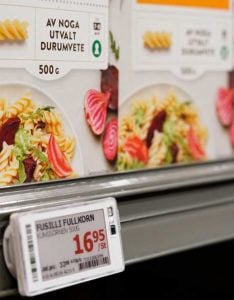 The gains go further by using labels to help with staff in store picking for online orders. In the context of low or no profitability for home delivery, electronic labels equipped with flash to indicate location of each and every item, cuts the time to pick each item by between five and ten seconds.
The gains go further by using labels to help with staff in store picking for online orders. In the context of low or no profitability for home delivery, electronic labels equipped with flash to indicate location of each and every item, cuts the time to pick each item by between five and ten seconds.
Based on 100 orders of 30 items per order paying staff €20 per hour seven days a week, averaging each pick at seven seconds equates to a saving of more than €42,500 per annum.
Flash combined with location mapping can help with general replenishment, enabling staff to find the right place more easily, saving time on each SKU replenished of between three and six seconds. At a sell-through rate of 20,000 items per day in batches of 10 items, time saved is four seconds. At €20 hourly cost this adds up to a saving of more than €16,000 per annum.
Reduce waste with dynamic pricing
In a further scenario, both time and waste can be reduced by automating the checking of item dates. Time saved is typically 50% and waste is reduced typically by 20-40%. Depending on current processes and waste level in the business, this equates to €8 000 – 15 000 per year.
And by adding dynamic pricing based on date, waste is reduced even further because each item is offered for sale at the price most likely to move it.
As these processes generate ever richer data and machine learning reveals new insights, all stakeholders can collaborate to optimise item performance even further.
Each of these technologies delivers value; combined they are transformational and set retailers on a journey to achieving a complete view of store and stock status and the tools to maintain a near perfect balance between availability and waste.
Originally published in Retail Times on June 1st, 2022
